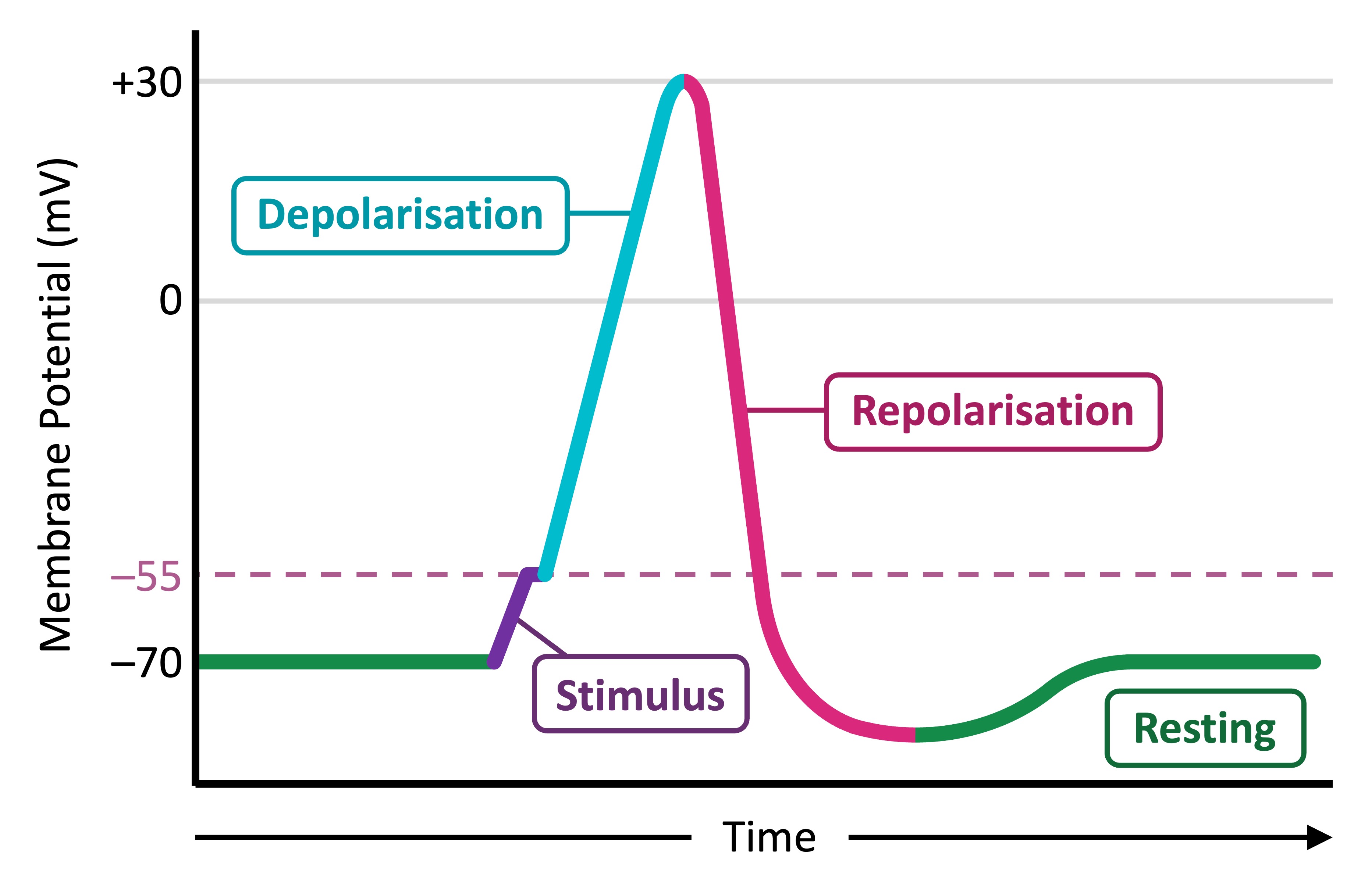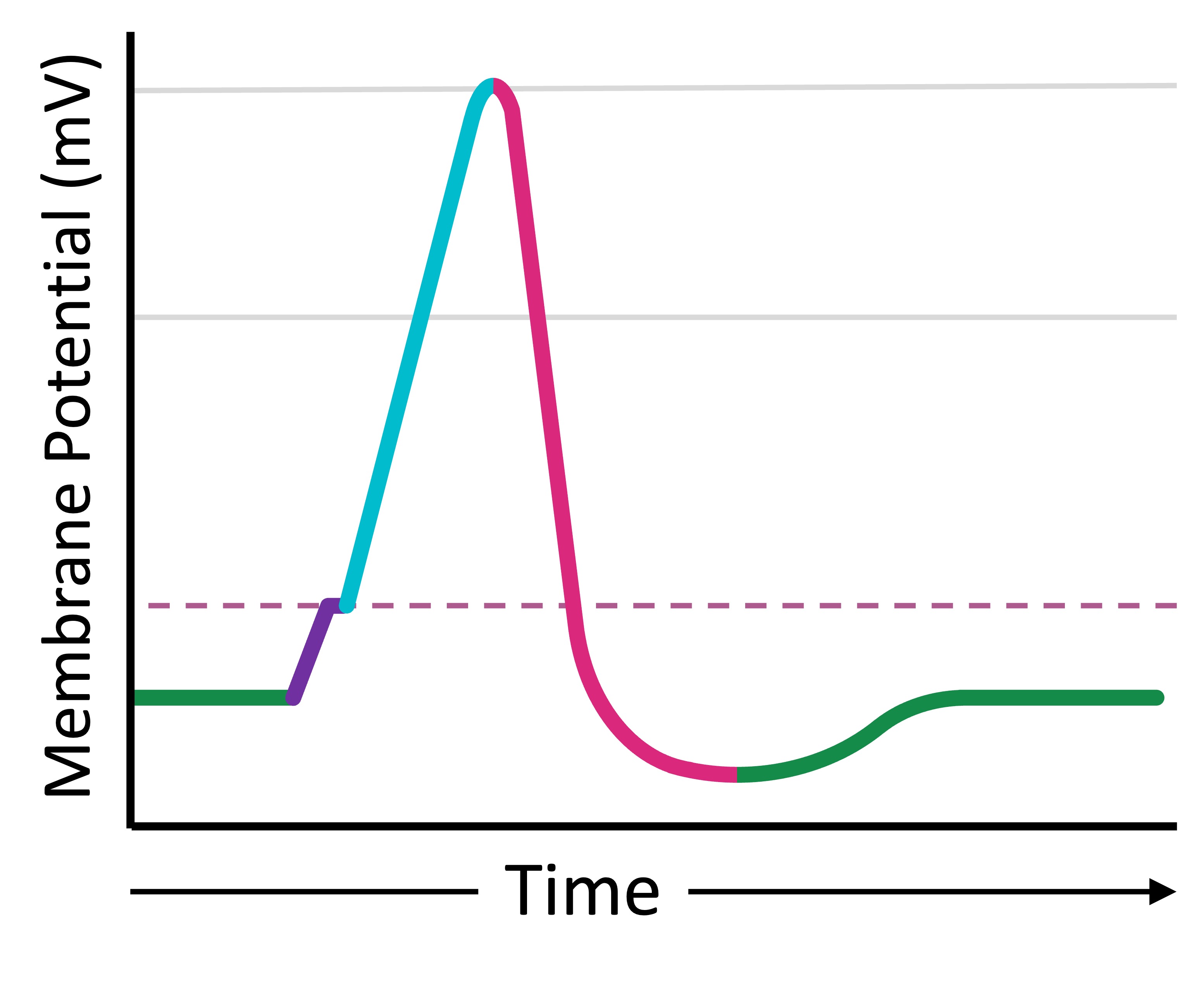

Oscilloscope Trace
Oscilloscopes are scientific instruments that are used to measure the membrane potential across a neuronal membrane
-
Data is displayed as a graph, with time (in milliseconds) on the X axis and membrane potential (in millivolts) on the Y axis
A typical action potential will last for roughly 3 – 5 milliseconds and contain 4 key stages:
-
Resting potential – Before the action potential occurs, the neuron should be in a state of rest (approx. –70 mV)
-
Depolarisation – A rising spike corresponds to the depolarisation of the membrane via sodium influx (up to roughly +30 mV)
-
Repolarisation – A falling spike corresponds to repolarisation via potassium efflux (undershoots to approx. –80 mV)
-
Refractory period – The oscilloscope trace returns to the level of the resting potential (due to the action of the Na+/K+ pump)
An action potential will only occur if the initial depolarisation exceeds a threshold potential of roughly –55 mV
Oscilloscope Trace






